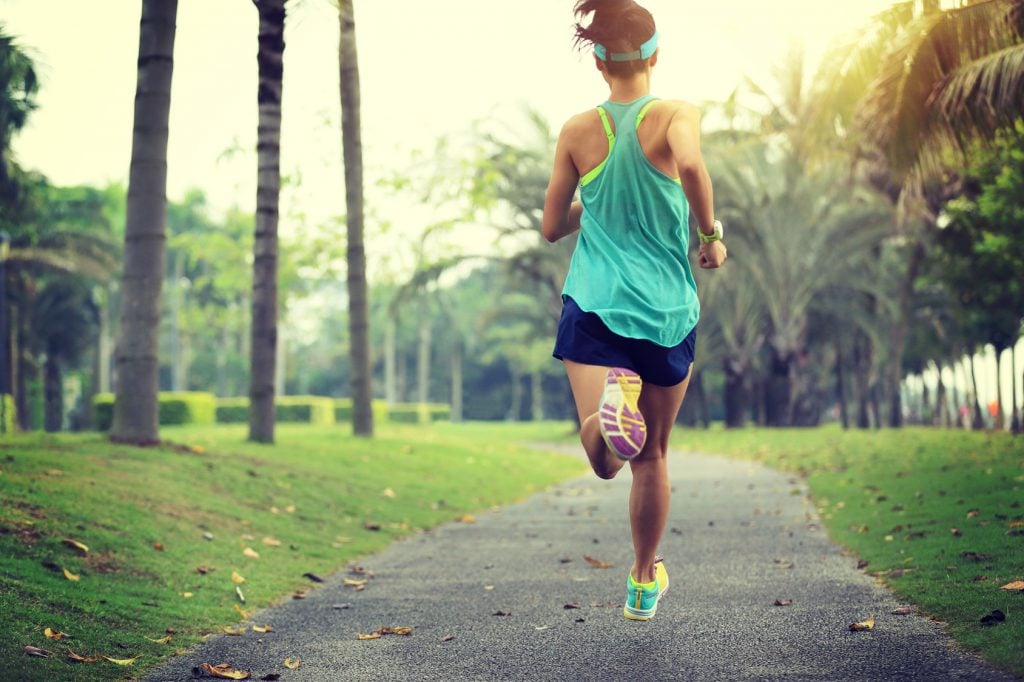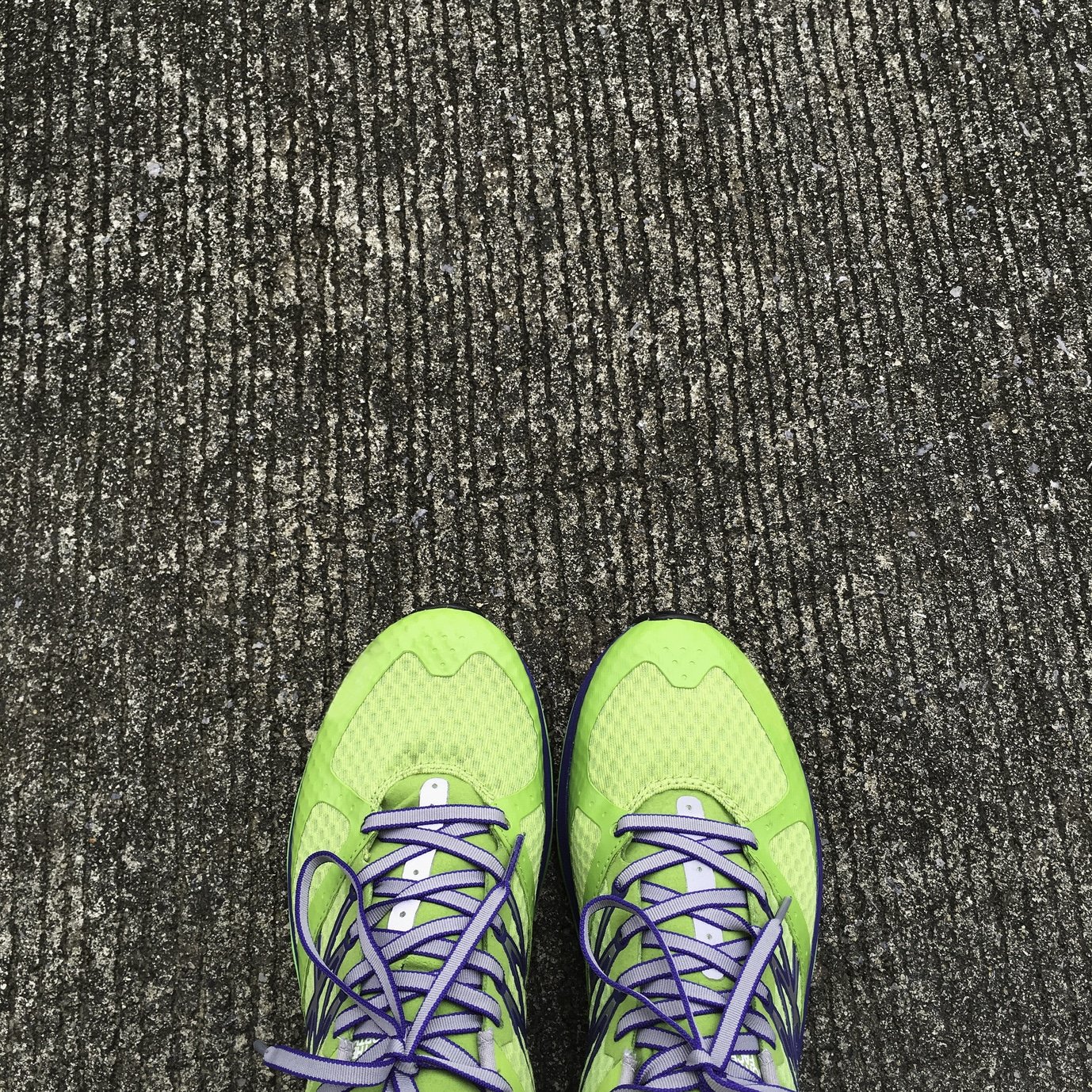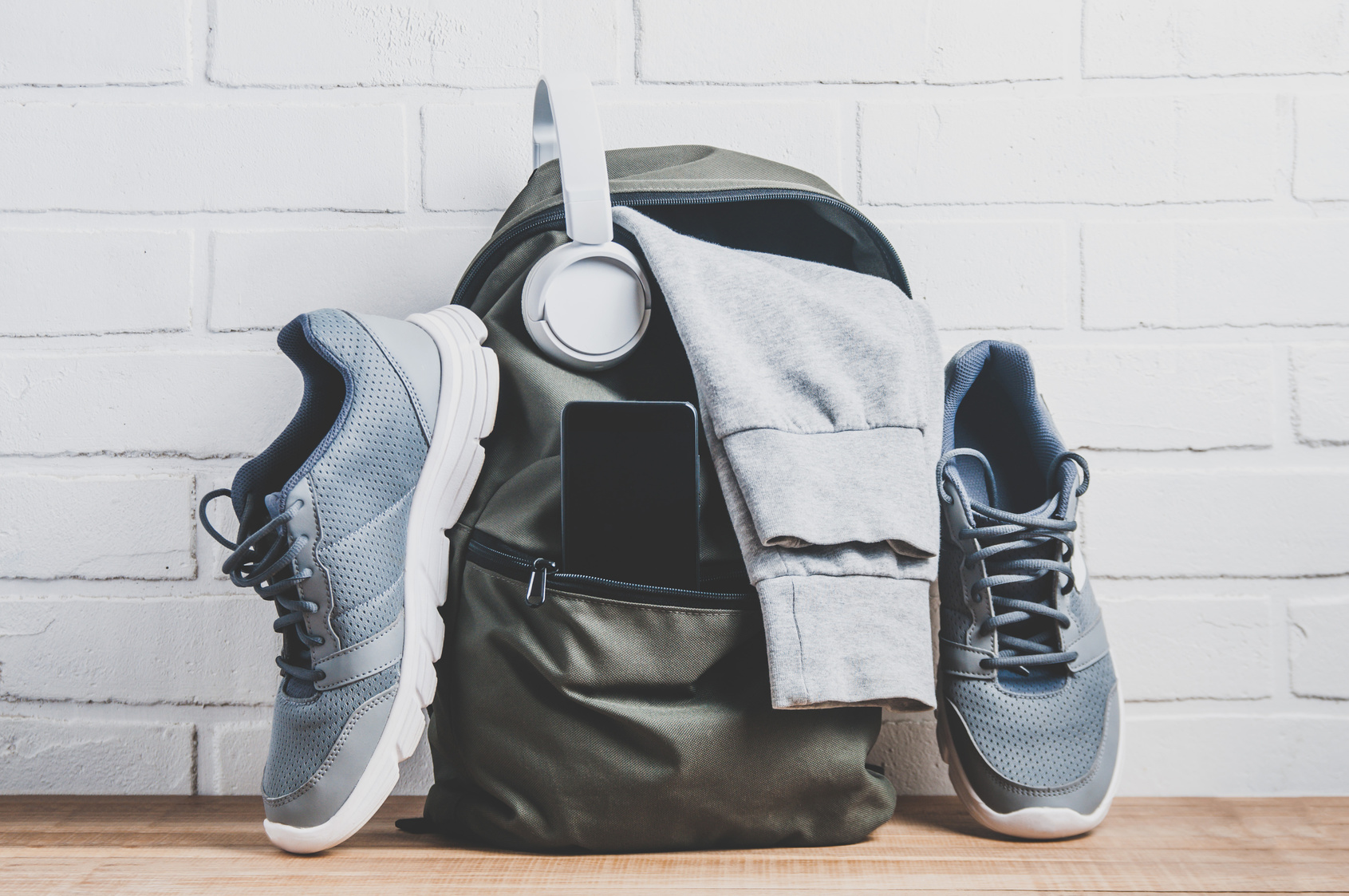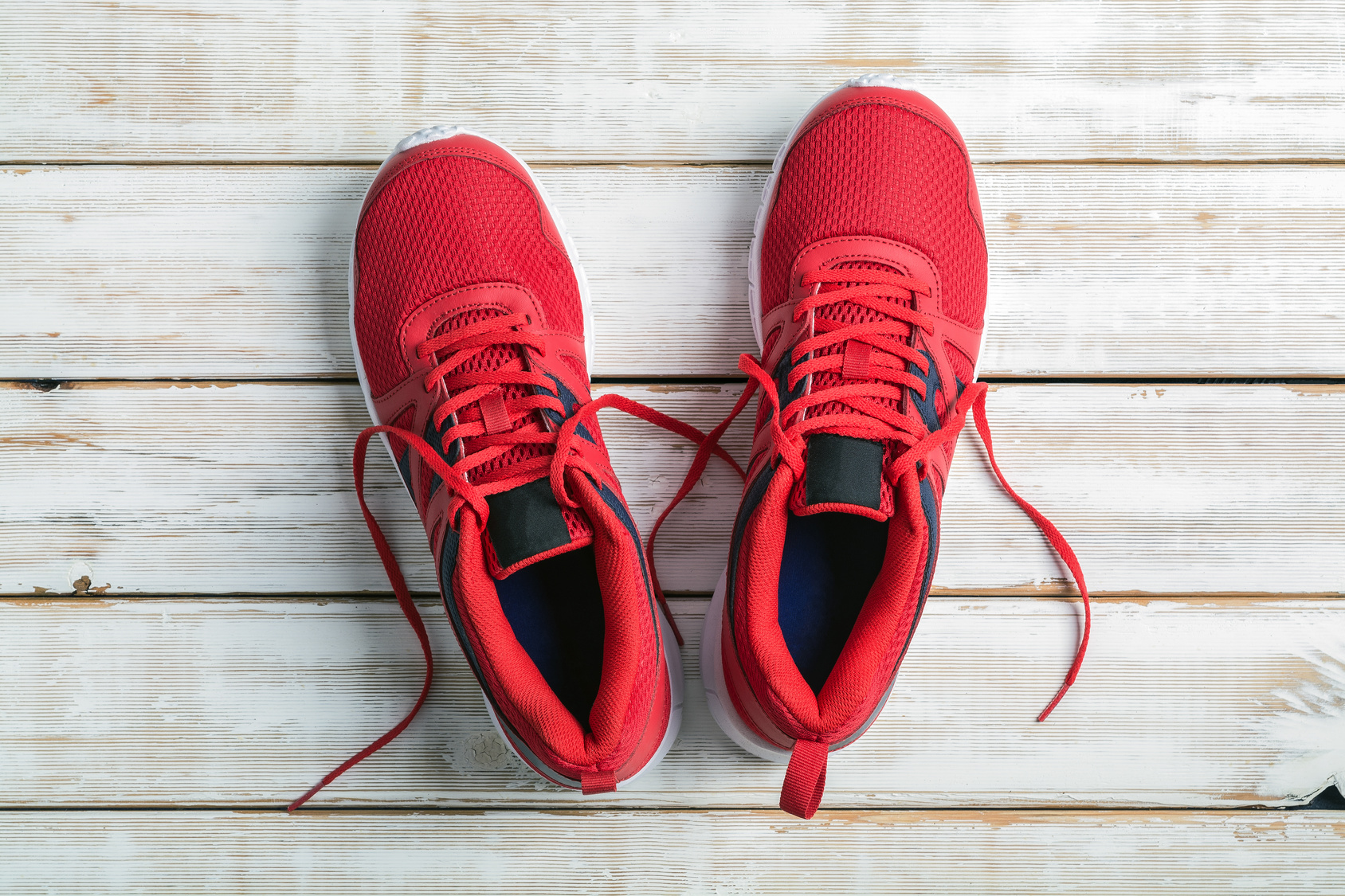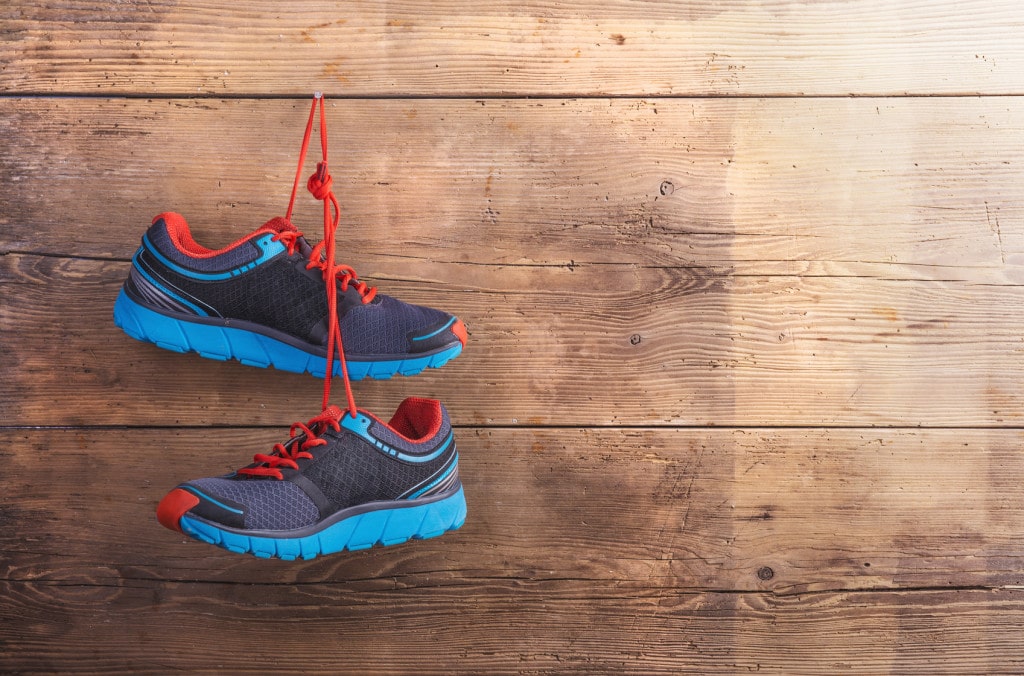As a coach now, I see this question pop up all the time: orthotics or stability shoes? And yeah, the advice out there is all over the place.
So let’s cut through the noise. In this guide, I’ll walk you through what I’ve learned—both from my own experience and from working with hundreds of runners. I’ll break down what each option actually does, what the science says, and how to know what might work best for your feet.
We’ll also squash some myths along the way (because more support isn’t always better).
By the end, you’ll walk away with a clear, no-fluff answer: are stability shoes enough for you—or is it time to invest in custom orthotics?
Custom Orthotics vs Stability Shoes?
Here’s the quick answer.
Both stability shoes and custom orthotics are designed to fix the same thing—too much inward foot roll (overpronation).
Stability shoes come with built-in features like firmer foam on the inner side to control that roll. They’re great for runners with mild to moderate flat feet.
Custom orthotics, on the other hand, are made specifically for your foot and better suited for more serious or specific issues.
Most runners can start with a well-built stability shoe—it’s easier and cheaper. But if your pain lingers or your pronation is extreme, getting custom orthotics from a pro might be worth it.
Best bet? Get a gait analysis, try both, and see what feels best on your run.
Now let’s dive a little deeper…
Flat Feet, Overpronation & Injury: The Basics
Let’s talk feet.
Flat feet usually mean your arches have dropped—and with that comes overpronation, where your foot rolls too far inward when it lands.
A little roll is normal—it helps absorb shock. But too much? That throws off your alignment. Ankles, knees, hips, lower back… they all get dragged into the mess.
The American Podiatric Medical Association warns that overpronation can lead to everything from arch pain to knee and back issues.
I’ve seen it firsthand with runners dealing with shin splints, runner’s knee, and even stress fractures. A lot of them had flat feet. It’s a common combo.
So if someone told you, “Hey, you need support,” they’re not wrong. You might. Because when your arch collapses over and over, your risk of injury climbs.
Here’s an easy test: check your old running shoes. If the inside edges are worn down way more than the outside, you’re probably overpronating.
Better yet, get a free gait analysis at a running store—they’ll record your stride and slow it down frame by frame. That alone can be a game-changer.
Once you confirm it? You’ve got two ways to fight the roll: buy shoes built to handle it or use inserts inside your current shoes.
Let’s break down the first one.
What Are Stability Shoes—and How Do They Help?
Stability shoes are made to slow down overpronation.
Think of them like neutral running shoes—but with backup. They’ve got features that help keep your feet from collapsing inward.
Here’s what makes them different:
- Firmer Foam on the Inner Edge: Most stability shoes use denser foam under the arch (called a dual-density midsole). It resists compression and slows down that inward roll. Take the ASICS GT-2000, for example—its inner foam wedge (now called “Litetruss”) helps reduce excess movement.
- Guide Rails: Brands like Brooks use guide rails in models like the Adrenaline GTS. These act like bumper lanes, gently nudging your foot back in line when it veers too far.
- Support Frames & Heel Counters: Some shoes (like the Saucony Tempus) have an EVA frame built into softer foam to cradle the foot. Others use firm heel counters or shanks under the arch to keep your foot stable.
Basically, these shoes are like training wheels. They let your foot move naturally—but they stop it from going too far.
This helps spread pressure evenly and keeps your knees aligned. According to the American College of Sports Medicine, stability and motion-control shoes are ideal for overpronators, and Mayo Clinic agrees—they recommend shoes with good arch structure to cut down on pain.
From what I’ve seen, a good pair of stability shoes can make an immediate difference.
And the science backs this up: studies have shown that motion-control shoes (the most supportive kind) can lower injury risk for runners who overpronate.
Another review found that arch-supportive shoes or insoles helped reduce injury for flat-footed runners.
Stability Shoes Aren’t One-Size-Fits-All
Let’s get one thing straight: not all stability shoes are the same. There’s a full spectrum out there, depending on how much support your feet need.
Mild stability shoes are kind of like “supportive neutral” shoes. They’ve got just a hint of guidance—perfect if you slightly overpronate but don’t need anything extreme.
Moderate stability is where most runners with flat feet end up. These shoes have visible support features but still feel smooth enough for daily miles.
Motion control is the big guns—heavy, max support shoes for folks with severe overpronation or who are on the heavier side. Think Brooks Beast or ASICS Gel-Forte—solid, wide, firm builds that aren’t messing around.
Back in the day, stability shoes were tanks. Heavy, clunky, and about as subtle as a brick. But now? Brands have stepped it up. They’ve made these shoes lighter, sleeker, and more runner-friendly.
A physical therapist at Doctors of Running put it best: “Stability shoes are better than they ever have been…plenty of options where arch support is designed into the shoe.”
Here’s the Deal:
If you already wear stability shoes—or you’re thinking about trying them—make sure they feel right when you run.
Support shouldn’t mean “stiff.” It should feel like your arch is being hugged, not smothered. If a shoe jabs into your foot or feels like a brick, try something else.
Some runners love a softer stability ride—like the Nike Structure or Saucony Guide—while others prefer the firmer posts in something like the New Balance 860.
One more thing: shoes aren’t magic wands. They can reduce pronation, but they won’t fix deep-rooted biomechanical issues.
Got one leg longer than the other? Weak glutes? That’s where orthotics or strength work might need to tag in.
Take a look at the midsole of a Brooks Adrenaline—you’ll see a darker foam along the arch side. That’s the medial post, built to gently fight off overpronation and keep your stride cleaner.
What Are Custom Orthotics?
Now let’s talk about the other piece of the puzzle: custom orthotics.
Think of them as inserts made just for your feet—like a tailored insole built to fix whatever quirks your feet throw at the pavement. They’re usually prescribed by a podiatrist and built using molds or 3D scans of your foot.
They’re not soft, cushy gel pads either—most are semi-rigid, designed to guide your foot’s shape while you walk or run.
Here’s how they actually work:
- Stability shoes tweak the midsole.
- Orthotics change the entire surface your foot lands on.
They support your arch, adjust your foot angles, and shift your alignment. Some can even post your heel or forefoot to address imbalance.
A well-made orthotic feels like a mini coach under your foot—nudging it back into a more neutral position with every step.
They can help reduce pronation, fix heel strike patterns, and absorb stress where your body needs it most.
According to a 2023 randomized trial, runners using orthotic inserts reported greater comfort—and even fewer injuries (though not a major statistical win there).
But the big standout? Comfort. Orthotics significantly boosted comfort scores across the board.
And let’s be honest—when the run feels better, you’re more likely to stick with it.
But It’s Not All Sunshine
Here’s where things get real. Orthotics might work wonders for some—but they’re not a perfect fit for everyone.
Let’s break it down:
Cost
Custom orthotics are pricey. In the U.S., they usually run $300–$600. Unless insurance has your back, it’s a big hit to the wallet.
Coach Michael at RunnersConnect says they can be up to $500 out-of-pocket.
Compare that to off-the-shelf insoles like Superfeet or PowerStep—those run around $50–$60.
And yep, some runners feel burned. One athlete I know spent big on customs and ended up tossing them for a cheap cork insole that felt way better.
Comfort Isn’t Guaranteed
Here’s the kicker—some runners hate the feel of orthotics. They can be stiff, archy, or just plain weird.
One guy in my running group said they made his shoes feel cramped and awkward. Another runner described sharp pain under his toes when he wore orthotics in a stability shoe—like his foot couldn’t bend right.
The problem? Overcorrection. Orthotics need to match your shoes and your feet. Often, they work best in neutral shoes with enough space.
Break-In Time & “Crutch” Concerns
Don’t slap orthotics into your shoes and run 10 miles right away. You’ve got to ease into them—some folks need weeks to adjust.
And here’s something worth thinking about: some coaches argue that relying on orthotics too much could weaken your feet.
Coach Jason Fitzgerald said it best: “An insert under the arch can act as a crutch—restricting movement and allowing the arch to weaken over time.”
He’s not wrong. Orthotics help with alignment, but they don’t build strength in your feet.
So if you’re relying on inserts without doing footwork or strength drills? You’re just putting a Band-Aid on the issue.
So, When Are Orthotics Actually Worth It?
Here’s my honest take: orthotics should be the last resort, not your first move. That’s how I treat them in my coaching.
And I’m not alone—most podiatrists and physical therapists will try everything else first: better shoes, strength work, form tweaks. Only after that comes the “custom” card.
Most runners do just fine with a solid stability shoe. Orthotics? Only if you’ve already tried the usual stuff and still feel broken.
Most people don’t need custom or even off-the-shelf insoles unless there’s a real diagnosis on the table.
That’s key: custom doesn’t mean better—only necessary when it’s truly needed.
When Custom Orthotics Might Actually Make Sense
If you check one of these boxes, orthotics might be worth a shot:
- Your arch is basically falling apart. I’m talking severe. If a stability shoe still isn’t enough, and one foot pronates more than the other—orthotics can provide that precise, side-specific fix.
- You’re injured… again. Tried the right shoes and still battling the same plantar fasciitis or tibial tendonitis? A custom insert might shift your load just enough to finally give that sore spot a break.
- Your feet are… unique. Crazy high arches? Mismatched foot lengths? Arthritic joints? This is where custom orthotics shine—they can be tailored to your exact foot shape, pressure points, and even conditions like arthritis.
And bonus: one pair can work across shoes. Use them in your running shoes, walking shoes, work shoes—whatever.
That means 24/7 support, which can be a game changer if you’re dealing with foot pain all day long.
“Orthotics” Doesn’t Always Mean Custom
Let’s clear something up.
When runners talk about orthotics, they’re not always talking about those $400 custom-molded ones.
There’s a middle ground: quality off-the-shelf insoles like Superfeet, Currex, or PowerStep. These aren’t made just for you, but they come in different arch heights and provide decent support.
And for some folks? That’s all they need.
I remember reading a runner’s post who paired PowerStep insoles with a light stability shoe—totally kept his ankle pain in check.
Another guy swore by Fulton cork insoles that molded to his feet over time. He actually preferred them over the expensive customs he tried before.
So yeah, orthotics come in tiers. You don’t have to go full-custom on day one.
Quick tip: Try a $50 over-the-counter insole in a neutral shoe. If it helps, maybe later you upgrade to custom. Test before you invest.
Custom Orthotics vs Stability Shoes: Pros & Cons Showdown
Let’s break it down like a coach would.
Stability shoes and orthotics both aim to fix the same issue—overpronation or flat feet—but they go about it differently.
Stability Shoes – The First Line of Defense
Pros:
- Built-in Support: No fiddling. Just lace up and run.
- Made for Movement: They flex naturally where your foot does. Good ones aren’t clunky bricks—they’re comfy and responsive.
- Great for Mild to Moderate Overpronation: For many runners, that’s all you need. Stability shoes can knock out shin splints or knee pain by correcting how your foot lands.
- Plenty of Choices: You’ve got options like the Asics Kayano, Brooks Adrenaline, Saucony Guide, New Balance 860, and Nike Structure. One will probably fit your vibe.
- Cost-effective: You’re buying shoes anyway. A stability version doesn’t add extra cost like orthotics do.
Cons:
- One-Size-Fits-Most: These shoes aren’t built for your exact foot. If one foot pronates more, or your arches are odd, it might not cut it.
- Feel & Weight: Some people find them stiff or heavier than neutral shoes. If you like soft or super minimalist shoes, they might feel clunky.
- Not for Extreme Cases: If your feet collapse like a pancake, even a stability shoe may not hold you up enough. That’s when we start talking orthotics.
Custom Orthotics – The Precision Fix
Pros:
- Tailored to You: This is the big one. Built for your feet—left and right can even be different if needed.
- Specific Pain Relief: They can target ball-of-foot pain, heel spurs, bunions—whatever’s bothering you.
- Serious Support: If your arch totally collapses and your ankles roll, orthotics can prevent that when a shoe can’t.
- All-Day Help: Use them in all your shoes, not just your runners. Great for people with issues that aren’t just limited to training.
Cons:
- Expensive & Time-Consuming: You need to see a specialist, do fittings, wait weeks… and they cost more than a pair of shoes. Not always covered by insurance.
- Can Be Too Much: If your orthotic is too rigid or paired with a super controlling shoe, it can overcorrect your stride. That might fix one issue and cause another—like forefoot pain or tight calves. One runner online said the combo gave him sharp forefoot pain.
- Not a Cure-All: Orthotics don’t fix poor form or weak glutes. They’re a tool—not a magic solution. You still need to do the strength work, the drills, and run smart.
Do I Need Custom Orthotics If I Wear Stability Shoes?
Let’s cut straight to it: if you already run in solid stability shoes, do you really need custom orthotics too?
Most of the time—nope.
Here’s the deal. Tossing orthotics into a stability shoe can sometimes be like adding salt to an already salty dish. It doesn’t make things better—it makes it too much.
You get overcorrected.
That’s a fancy way of saying your foot’s natural movement gets jammed up because there’s too much support fighting against itself.
Why You Shouldn’t Stack Support on Support
Stability shoes are already designed to guide your gait. They assume how your foot moves and try to fix things—like overpronation—along the way.
Now imagine dropping an orthotic in there that also wants to correct your stride. It’s like two backseat drivers yelling conflicting directions.
Here’s what happens: the shoe’s medial post pushes up on your arch, the orthotic does the same, and boom—you’ve got a foot that’s locked up and can’t move naturally.
You might even feel like you’re running with a brick in your shoe.
What the Pros Say
Most podiatrists agree: if you get custom orthotics, don’t shove them in a motion-control or heavy stability shoe.
The folks at Doctors of Running are very clear—pair orthotics with neutral shoes that have enough room to work. Otherwise, you’re just asking for trouble.
I’ve heard the same advice again and again: if you’re in a stability shoe and it’s doing the job—no pain, no weirdness—you likely don’t need orthotics. Don’t fix what isn’t broken.
That said, there are exceptions. If you’ve got a legit issue—like a leg length discrepancy, bunion, or post-surgical change—an orthotic might be necessary even with a supportive shoe.
But that’s a medical call, not something to guess on.
Flip It: Got Orthotics?
Here’s where things get flipped.
If you already have custom orthotics (and they’re helping), you probably don’t need a bulky stability shoe on top of that.
A lot of folks think, “Oh, I have foot issues—I’ll get both.” Nope. That double-dip often backfires.
Instead, go with a neutral shoe that plays nice with your insert. Think removable insole, wide enough toe box, enough volume for the orthotic to sit right.
Some favorites among orthotic-wearers:
- Brooks Dyad
- Saucony Echelon
- Certain New Balance trainers
- ASICS Cumulus
- Nike Pegasus
A sports podiatrist I know often recommends “stable neutral” shoes.
Basically, these aren’t full-on stability shoes, but they’ve got a wide, flat base and a little structure—just not aggressive posting.
The orthotic does the heavy lifting. The shoe just supports the stage.
So… Which One Wins?
Let’s keep it simple:
Are stability shoes better than orthotics for overpronation?
In a lot of cases—yeah.
A well-designed stability shoe can take care of mild to moderate overpronation without needing a custom insert
(Runners Connect, Doctors of Running).
Orthotics are usually the second line of defense—used when shoes alone aren’t cutting it.
If your current shoe isn’t solving the problem (or you’ve got a very specific issue), then orthotics might help. But they’re not the default.
And if you do need orthotics, you can probably say goodbye to motion-control tanks like the Beast.
A lighter, neutral shoe with a flat base usually works better with orthotics doing the correcting from the inside.
I’ve even seen runners on Reddit say their podiatrist advised them to skip the stability shoe and just pair a good orthotic with a neutral base.
That’s becoming more common.
Final Word: Don’t Go Overboard
Here’s the real coaching moment: don’t just pile on more “support” thinking it’ll fix everything.
Support isn’t a contest. More isn’t always better.
Dr. Matt Klein said it best: “More is not better. The right amount is best”
Your feet are meant to move.
Even in a stability shoe—or with orthotics—you still want some natural pronation. Zero movement means overcorrection, and that leads to its own set of problems.
Takeaway
- If your stability shoes feel great? Don’t add orthotics. Let the shoe do its thing.
- If you’re in a stability shoe and still hurting? Get assessed. You might need an orthotic—or a totally different shoe.
- If you already wear orthotics? Use them with a neutral shoe that gives them space to work.
- If something feels off? Listen to your body. New pain = a red flag.
The sweet spot? Enough support to run pain-free—but not so much that your feet can’t do what they’re built to do.

